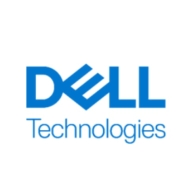

Dell RecoverPoint and NetApp SnapMirror compete in the data protection and replication solutions category. Dell RecoverPoint seems to have the upper hand with its continuous data protection and point-in-time recovery features.
Features: Dell RecoverPoint offers continuous data protection, remote replication, and seamless integration with VMware's Site Recovery Manager. It provides block-level duplication and automatic failover crucial for disaster recovery. NetApp SnapMirror emphasizes snapshot technology, real-time replication, and efficient data migration to ensure robust performance and stability.
Room for Improvement: Dell RecoverPoint users note the Flash-based Unisphere interface can be slow and lacks support for cascading replication. It also consumes considerable storage for journals. Enhancing compatibility with other storage systems is suggested. NetApp SnapMirror could improve data compression during transfers, simplify controller volume access, and address restrictive licensing for synchronous mirrors. Both could enhance user interfaces and platform compatibility.
Ease of Deployment and Customer Service: Dell RecoverPoint is mainly on-premises but supports hybrid cloud environments. Its technical documentation is well-received, though customer support has mixed reviews. NetApp SnapMirror supports both on-premises and hybrid cloud deployments with appreciated simplicity. However, some users desire better monitoring tools. Customer support is effective but could improve pricing consistency.
Pricing and ROI: Dell RecoverPoint is often perceived as costly with bundled costs in storage solutions. Licensing can be one-time, but ongoing support adds to expenses. It is valued for robust recovery capabilities. NetApp SnapMirror, part of NetApp storage bundles, is seen as cost-effective within larger solutions, though additional licenses might be prohibitive. Value perception varies based on implementation scale.
A bank experienced a disaster within ten years and was able to recover all data, avoiding substantial losses.
Dell support is robust, with geographically distributed branches and partner support.
The engineers and software teams respond immediately once they receive a call, offering high-quality service.
I consider Dell RecoverPoint highly scalable, rating it as a nine out of ten.
Dell RecoverPoint can handle large scales of data, which is typical in the banking sector.
I consider Dell RecoverPoint to be very scalable, and I would rate it an eight out of ten.
NetApp SnapMirror is very scalable, as all we need is an ONTAP cluster, starting from two nodes up to 24 nodes with NAS or 12 nodes in a SAN in an iSCSI environment.
It is considered to be very stable.
The version designed for VMware, RecoverPoint for VMs, simplifies many problems in the VMware environment.
It requires double the storage capacity for source and target storage areas, which creates a heavy burden on storage resources.
Dell RecoverPoint can be improved by virtualizing it, which would use less storage and enhance performance.
VMware SRM was cheaper.
Dell RecoverPoint requires two sets of servers for both Data Center and Disaster Recovery, which can make it more expensive than other solutions.
Dell RecoverPoint is affordable for enterprises but not for mid-size organizations due to the required network investment for bandwidth across sites.
This feature is crucial for maintaining zero RPO and RTO, especially during any outage or disaster.
It operates seamlessly and efficiently, allowing for data recovery with no downtime during the copy process.
The failover and failback options are the most impactful features of Dell RecoverPoint in terms of data protection.
| Product | Market Share (%) |
|---|---|
| NetApp SnapMirror | 10.7% |
| Dell RecoverPoint | 3.5% |
| Other | 85.8% |


| Company Size | Count |
|---|---|
| Small Business | 10 |
| Midsize Enterprise | 7 |
| Large Enterprise | 7 |
| Company Size | Count |
|---|---|
| Small Business | 6 |
| Midsize Enterprise | 10 |
| Large Enterprise | 10 |
Dell RecoverPoint provides continuous data protection with multiple recovery points to restore applications instantly to a specific point in time. It is used to protect applications with bidirectional synchronous and asynchronous replication and digital video recorder (DVR)-like recovery in physical, virtual, and cloud infrastructures.
We monitor all Data Replication reviews to prevent fraudulent reviews and keep review quality high. We do not post reviews by company employees or direct competitors. We validate each review for authenticity via cross-reference with LinkedIn, and personal follow-up with the reviewer when necessary.